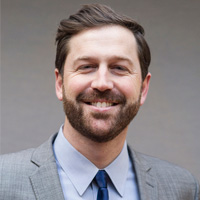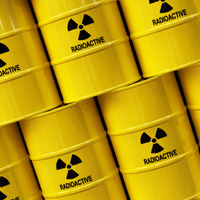Theo Kalionzes, Program Officer, Nuclear Challenges, discusses the state of the nuclear regime and the need to maintain nuclear security amid other global crises.
We find ourselves in the midst of a dark summer.
The coronavirus is on a rampage, killing hundreds of thousands around the world with no clear end in sight. Anti-Black racism and police brutality persist. Dreams are deferred and opportunities denied due to record-breaking unemployment. People are suffering, and they are scared.
Fear is nothing new, unfortunately. During the Cold War, folks were scared too. Back then, many feared nuclear war.
Americans carried with them the dread that any city—Manhattan or Miami, Portland or Poughkeepsie—could be reduced to a smoldering radioactive ruin in minutes. To make matters worse, by the 1960s some feared we could not put the nuclear genie back in the bottle. The spread of nuclear weapons felt inevitable.
President Kennedy warned, “I see the possibility in the 1970s of the President of the United States having to face a world in which 15 or 20 or 25 nations may have these weapons." Satirist Tom Lehrer captured the nuclear whiff in the air, singing sardonically:
First we got the bomb and that was good
Cause we love peace and motherhood
Then Russia got the bomb, but that's OK
Cause the balance of power's maintained that way!
Who's next?
Fortunately for all of us, Kennedy and Lehrer’s dire predictions have not fully panned out. Nine countries possess nuclear weapons today, and the last time they were used in combat—75 years ago in 1945, when America dropped nuclear bombs on Hiroshima and Nagasaki, Japan—is fading from living memory. While these bleak facts are nothing to brag about, it is safe to say that fewer countries built the bomb than expected.
How have we avoided the fate predicted by Kennedy and Lehrer? Any meaningful explanation must credit the system of treaties, agreements, and norms that world leaders, negotiators, scientists, and policy experts established over many years through painstaking diplomacy.
The system they created is referred to as the nuclear regime. Through incentives, inducements, and verification, the regime aims to lower nuclear risks by slowing proliferation and moving toward a world without nuclear weapons. It also helps countries gain access to the peaceful benefits of nuclear technology. These principles were enshrined in what many call the cornerstone of the regime, the Treaty on the Nonproliferation of Nuclear Weapons (NPT) which celebrates its 50th anniversary this year.
In the midst of the avalanche of crises we have seen in 2020, it is easy to forget about nuclear diplomacy’s role in keeping us safe. But nuclear dangers did not end with the Cold War, and they are not dormant during the pandemic.
In fact, nuclear dangers appear to be intensifying just as the regime is falling into disrepair. Long-simmering tensions between the nuclear haves and have-nots over the pace of disarmament threatens the NPT. The Intermediate-Range Nuclear Forces Treaty, the Iran Nuclear Deal, and the Open Skies Treaty have either collapsed or are at risk of collapsing. New START, the last remaining bilateral arms reduction pact between the United States and Russia, could be next. Revelations from Washington about renewed interest in conducting the first explosive nuclear test since 1992 adds to the alarm.
Our Nuclear Challenges program is proud to fund a small but vibrant community of experts who work tirelessly to pursue diplomacy and protect the regime. They develop policy proposals, engage in quiet discussions with senior officials, and hold leaders to account when they fail to consider the nuclear consequences of their actions.
As devastating as the pandemic has been, it will not last forever. But there is no vaccine for nuclear war. Until we eliminate these weapons, our collective security requires that we remember diplomacy.




